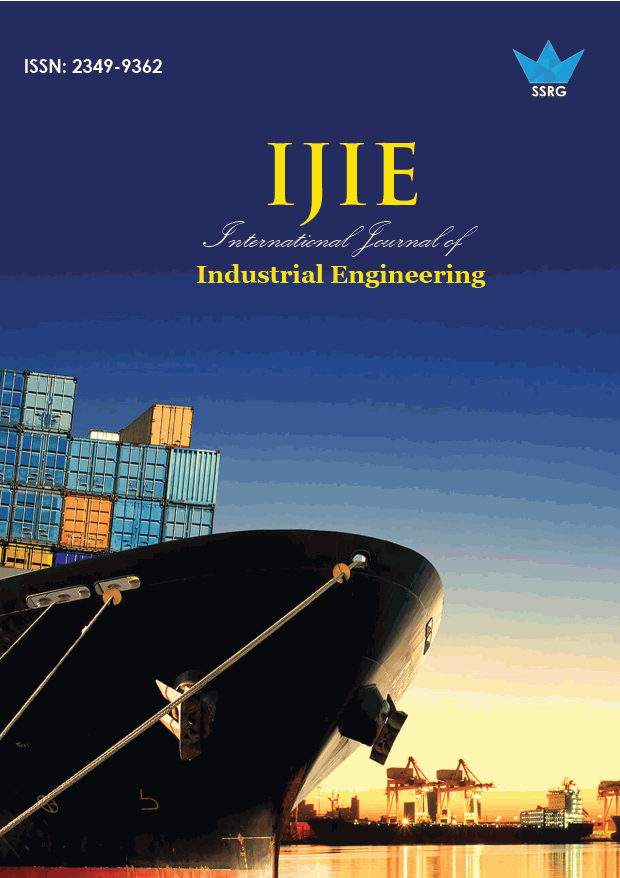Optimisation of product design through QFD, AHP, Entropy and TOPSIS method: a case study of a Bathtub

| International Journal of Industrial Engineering |
| © 2016 by SSRG - IJIE Journal |
| Volume 3 Issue 1 |
| Year of Publication : 2016 |
| Authors : M.S. Parvez, S. M. Tamjid Al Rifat, S. M. Moshur Siddiquei and A.S.M. Hoque |
How to Cite?
M.S. Parvez, S. M. Tamjid Al Rifat, S. M. Moshur Siddiquei and A.S.M. Hoque, "Optimisation of product design through QFD, AHP, Entropy and TOPSIS method: a case study of a Bathtub," SSRG International Journal of Industrial Engineering, vol. 3, no. 1, pp. 1-7, 2016. Crossref, https://doi.org/10.14445/23499362/IJIE-V3I1P101
Abstract:
This paper proposes a hybrid framework combining AHP (Analytical Hierarchy Process), QFD (Quality Function Deployment), Entropy and TOPSIS (Technique for Order Preference by Similarity to Ideal Solution) method to incorporate customer preference and perception into the process of product development. QFD is a useful analysing tool in product design and development to identify these latent customer requirements. In this paper, first by using AHP several customer requirements are identified and prioritised. Secondly, by using fishbone diagram the relationship between technical attributes and customer requirements are listed and these relationships are put in a house of quality. Entropy method is used to calculate sales point. Afterward, TOPSIS method is used to find the best and worst alternative solution. The proposed method is used for evaluating the performance of the bathtub. Then the rankings of the four renowned bathtub companies are determined according to their results.
Keywords:
QFD, Customer Requirements, AHP, Entropy Method, TOPSIS
References:
[1] H. Chen, and Q. S. Zhang, ―An improved Weighted TOPSIS Method and Its Application Based on Grey Relational Analysis, Journal of Fuzhou University, vol. 6, pp.40-44, 2010
[2] X. Q. Zhang, C. Liang, and H.Q. Liu, ―Application of improved TOPSIS method based on coefficient of entropy to comprehensive evaluating water quality, Journal of Harbin Institute of Technology, vol. 39(10), pp.1670-1672, 2007
[3] Z. Z. Yang, et al., ―A Study on the Method for Supplier Selection Based on Principal Component Analysis and TOPSIS, Journal of Information, vol.11, pp. 7-10, 2008
[4] X. X. Luo, and S. H. Peng, ―Research on the Vendor Evaluation and Selection Based on AHP and TOPSIS in Green Supply Chain, Soft Science, vol. 25(2), pp.53-56, 2011
[5] X.F. Li, Z. X. Liu, and Q. E. Peng (2011), ―Improved Algorithm of TOPSIS Model and Its Application in River Health Assessment, Journal of Sichuan University, vol. 43(2), pp. 14-21.
[6] T.L. Saaty, Analytic Hierarchy Process, McGraw-Hill, Newyork, 1980
[7] A.H.I. Lee, W.C. Chen, and C.J. Chang, ―A fuzzy AHP and BSC approach for evaluating performance of IT department in the manufacturing industry in Taiwan, Expert Systems with Applications, vol. 34, pp. 96–107, 2008

 10.14445/23499362/IJIE-V3I1P101
10.14445/23499362/IJIE-V3I1P101